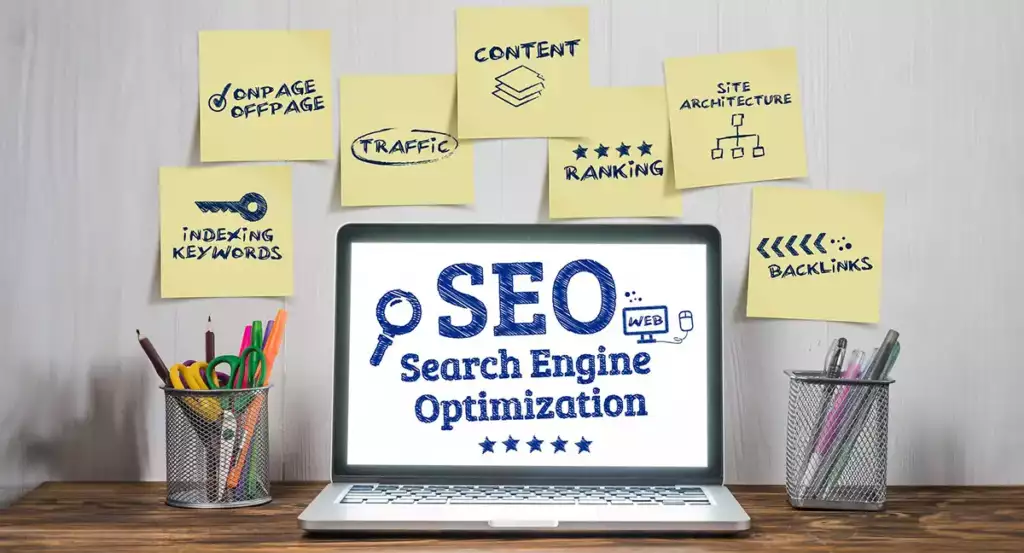
Guide to Start Your Ecommerce Business Without Money Investment
Starting an eCommerce business without upfront investment may seem like an impossible feat, but how to start a ecommerce business without money is far more achievable today than it ever has been. The internet provides vast opportunities for resourceful entrepreneurs who are willing to take the time to explore free tools, adopt creative strategies, and leverage innovative methods to build a thriving business. With the right approach, you can turn your business idea into reality without needing to spend money upfront.
This guide will walk you through actionable steps on how to start a ecommerce business without money. From choosing the right business model to leveraging free marketing platforms and creating a strong brand presence, you’ll learn how to start a successful eCommerce venture with minimal financial outlay..
Why Start an Ecommerce Business?
The eCommerce industry continues to grow at an unprecedented rate. Global eCommerce sales are projected to reach over $6 trillion by 2024, demonstrating the vast potential this sector holds. With increasing internet penetration and a growing number of consumers shopping online, now is an excellent time to enter the eCommerce space.
Moreover, an eCommerce business offers tremendous flexibility. You can operate your business from anywhere in the world, without the need for physical storefronts or significant overhead costs. The scalability of an eCommerce business also means you can start small and grow at your own pace, testing products and markets with low financial risk.
However, a key advantage of starting an eCommerce business today is the relatively low barrier to entry. Unlike traditional brick-and-mortar stores, you don’t need significant capital to get started. With careful planning and a smart approach, you can build a profitable eCommerce business with little to no money investment.
Choose the Right Business Model
Choosing the right business model is the first step in understanding how to start a ecommerce business without money. Several models are well-suited to entrepreneurs who want to start with minimal investment:
1. Dropshipping
Dropshipping is a popular eCommerce model where you sell products directly from suppliers without holding inventory. When a customer places an order, the supplier ships the product directly to the customer. You only pay for the product after a sale has been made, making dropshipping an attractive option for those with limited capital. This model eliminates the need for upfront investment in inventory, warehousing, and logistics.
2. Print on Demand
In this model, you design custom products like t-shirts, mugs, or phone cases. When an order is placed, a third-party provider prints and ships the product. Similar to dropshipping, print-on-demand businesses require no inventory investment, and you only pay for the product once you’ve made a sale.
3. Affiliate Marketing
Affiliate marketing is another great option for how to start a ecommerce business without money. Instead of selling your own products, you promote products from other businesses and earn a commission for every sale made through your referral link. This model allows you to earn revenue without investing in inventory, shipping, or customer service.
4. Digital Products
Selling digital products such as eBooks, courses, or printables is a cost-effective way to start an eCommerce business. Once you create the digital product, it can be sold repeatedly without the need for physical production or shipping. This model has low overhead costs and is ideal for entrepreneurs who have skills or knowledge to share.
Choosing the right business model will set the foundation for your eCommerce business, allowing you to start without the need for significant upfront investment.
Selecting a Profitable Niche
The key to success in eCommerce is selecting a profitable niche. A niche is a specific segment of the market that caters to a targeted audience. By focusing on a niche, you can differentiate your business from competitors and create a loyal customer base.
When choosing a niche, consider the following factors:
- Passion and Expertise: Choose a niche that aligns with your interests or expertise. When you’re passionate about a subject, it will be easier to stay motivated and create content that resonates with your target audience.
- Market Demand: Conduct research to determine if there is demand for the products in your niche. Free tools like Google Trends and keyword research platforms can help you gauge interest levels and identify trending products. Look for niches that have a healthy level of demand but are not overly saturated.
- Competition: Analyze the competition within your chosen niche. Entering a market with heavy competition can make it difficult to stand out, especially if you don’t have the resources to compete with larger brands. Focus on underserved areas or niches where you can offer unique products or services.
- Profitability: Consider the potential profitability of your niche. While some niches may have high demand, they may not be profitable if the margins are too low. Look for niches where you can add value and charge a premium for your products or services.
Once you’ve identified a profitable niche, focus on understanding your target audience’s needs and preferences. The better you know your audience, the more effectively you can position your products and tailor your marketing efforts to reach them.
Leverage Free Ecommerce Platforms and Tools
Understanding how to start a ecommerce business without money requires utilizing free platforms and tools wherever possible. Fortunately, there are numerous free eCommerce platforms that allow you to set up an online store at no cost. While these platforms may have limitations, they are a great way to get started without financial investment.
Some popular free eCommerce platforms include:
1. Website Builders
Many website builders offer free plans that allow you to create a basic online store. These platforms typically provide free templates, drag-and-drop functionality, and essential eCommerce features like product listings and payment gateways. You can upgrade to a paid plan as your business grows, but the free versions are sufficient for learning how to start a ecommerce business without money.
2. Free Marketing Tools
Marketing is a crucial part of running an eCommerce business, but it doesn’t have to be expensive. There are numerous free marketing tools that can help you promote your business. Social media platforms like Facebook, Instagram, and Pinterest allow you to build a presence, connect with your audience, and showcase your products for free.
3. Email Marketing
Email marketing is one of the most effective ways to drive traffic and increase sales. Many email marketing platforms offer free plans that allow you to send a limited number of emails per month. You can use these free tools to build your email list, send promotional offers, and engage with your customers.
4. Design Tools
Free design tools like Canva can help you create professional-looking marketing materials, product images, and social media posts without spending money on a designer. These tools offer templates and easy-to-use features, allowing you to create high-quality visuals for your business.
5. SEO Tools
Search engine optimization (SEO) is a powerful strategy for driving organic traffic to your store. Free SEO tools like Google Search Console and Ubersuggest can help you optimize your website for search engines, track your rankings, and find opportunities for improvement.
By leveraging free platforms and tools, you can significantly reduce the cost of how to start a ecommerce business without money and focus on growing your brand.
Build a Strong Brand Identity
Creating a strong brand identity is essential when learning how to start a ecommerce business without money, as it helps you stand out in a crowded marketplace. Your brand is more than just a logo or color scheme—it’s the story and values behind your business that resonate with your audience.
Start by defining your brand’s mission and vision. What does your business stand for? What problems do you solve for your customers? Having a clear brand mission will help you connect with your audience on a deeper level and build trust with your customers.
Next, develop a consistent visual identity for your brand. This includes your logo, color palette, typography, and overall design aesthetic. Free design tools and templates can help you create a professional brand identity without needing to hire a designer, a crucial step when you’re learning how to start a ecommerce business without money.
Finally, focus on storytelling. Share your journey, values, and purpose with your audience through your website, social media channels, and marketing materials. By telling a compelling brand story, you can create an emotional connection with your customers and differentiate yourself from competitors.
Social Media Marketing for Ecommerce
Social media is one of the most powerful and cost-effective marketing tools for eCommerce businesses. With billions of users worldwide, platforms like Instagram, Facebook, and TikTok provide an excellent opportunity to reach your target audience and promote your products without spending money on advertising.
Here are some strategies to market your eCommerce business on social media:
- Create Engaging Content: Share content that is visually appealing, informative, and entertaining. Post high-quality images and videos of your products, behind-the-scenes looks at your business, and customer testimonials. The more engaging your content, the more likely it is to be shared and reach a wider audience.
- Leverage User-Generated Content: Encourage your customers to share their purchases on social media and tag your brand. User-generated content is a powerful form of social proof that can build trust and credibility for your business. It also helps spread the word about your products to new audiences.
- Collaborate with Influencers: Partnering with influencers in your niche can help you reach a larger audience and drive more sales. You don’t need to work with big-name influencers—micro-influencers with smaller but highly engaged audiences can be more effective and affordable.
- Use Hashtags: Hashtags are a great way to increase the visibility of your posts and attract new followers. Research popular and relevant hashtags in your niche and use them strategically in your posts to reach more potential customers.
- Engage with Your Audience: Social media is all about building relationships. Respond to comments, answer questions, and engage with your followers regularly. The more you interact with your audience, the stronger your connection will be, leading to increased brand loyalty and sales.
By using social media strategically, you can build brand awareness, drive traffic to your store, and grow your eCommerce business without needing to invest in paid advertising.
SEO for Ecommerce: Driving Organic Traffic
Search engine optimization (SEO) is a crucial strategy when learning how to start a ecommerce business without money because it helps you drive organic traffic to your store without relying on paid ads. With the right SEO techniques, you can improve your website’s visibility in search engine results and attract more visitors naturally.
Here are some tips for optimizing your eCommerce store for SEO:
- Keyword Research: Start by identifying the keywords and phrases your target audience is searching for. Use free tools like Google Keyword Planner or Ubersuggest to find relevant keywords with high search volume and low competition. Incorporate these keywords into your product titles, descriptions, and blog content.
- Optimize Product Pages: Your product pages should be optimized for both search engines and users. Use clear, descriptive titles, and include relevant keywords in your product descriptions. Add high-quality images, videos, and customer reviews to enhance the user experience.
- Create High-Quality Content: Content marketing is a powerful way to improve your SEO and drive traffic to your store. Create blog posts, how-to guides, and tutorials related to your products and niche. Use your blog to answer common questions your customers may have and provide valuable information that positions your brand as an authority in your industry.
- Improve Website Speed: Website speed is a critical factor in SEO rankings. A slow-loading site can hurt your search engine rankings and lead to higher bounce rates. Use free tools like Google PageSpeed Insights to analyze your website’s performance and identify opportunities for improvement.
- Build Backlinks: Backlinks are links from other websites that point to your site. They are an important factor in SEO and can help improve your search engine rankings. Focus on building high-quality backlinks by reaching out to influencers, guest blogging on relevant sites, and creating shareable content.
By implementing these SEO strategies, you can increase your website’s visibility, attract more organic traffic, and boost sales without spending money on advertising.
Conclusion
Starting an eCommerce business without money is not only possible, but it can also be highly rewarding. By choosing the right business model, selecting a profitable niche, leveraging free tools and platforms, and focusing on organic marketing strategies, you can build a successful eCommerce business with minimal financial investment. Remember that resourcefulness, creativity, and persistence are your most valuable assets. With the right mindset and a strategic approach, you can turn your entrepreneurial dreams into reality and create a thriving online business.



